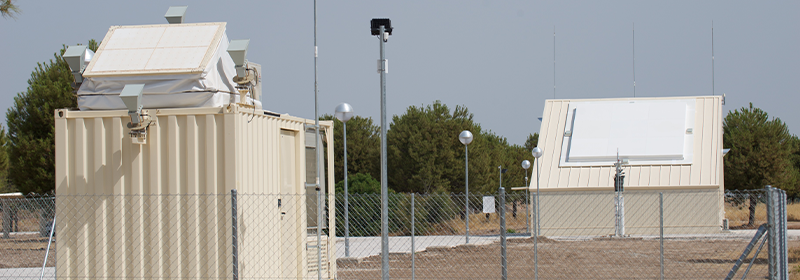- He advocates a collaboration model that allows the EU to develop robust capabilities in advanced sensors to improve monitoring, have an open data repository for the management system, and have services capable of predicting satellite movements and strengthening cybersecurity
-
He also firmly believes that the future space traffic management system should embody the knowledge of European air traffic management companies, which are world leaders
-
Indra has the best low-orbit object detection radar on the continent (according to the European Space Agency). This infrastructure will serve as the basis for the satellite traffic management system

Indra’s Managing Director of Transportation and Defence, Ignacio Mataix, analyzes the challenges and roadmap that Europe must follow to have its own infrastructure with which to manage space traffic. “The number of satellites is growing exponentially and, with it, the risk of collision. To this we have to add the increase in debris that orbits without control,” he said, in the context of the 12th European Space Conference held in Brussels.
Indra’s Managing Director shared his view of this challenge during the discussion panel on Space Security chaired by the Member of the European Parliament, Marian-Jean Marinescu, with the participation of the GSA Executive Director, Carlo des Dorides, the Director of the EU Satellite Center, Sorin Ducaru and the Director of Operations of the European Space Agency, Rolf Densing.
Mataix highlighted that “Europe must position itself at the forefront in space traffic management capabilities and achieve full operational autonomy in this domain”. To achieve this, he pointed out that we must rely on organizations and companies that have been working in civil air traffic for decades in Europe and have developed a world-class air management model.
He identified four main areas, in which the EU must develop strong capabilities:
- Advanced sensors with which to improve monitoring capabilities, to offer performance in terms of coverage, accuracy and the speed required. “The EU needs new sensors that can track the movements of smaller objects and, for this, adequate investment, both domestically and at the European level, is required.
- An open architecture data repository of the Space Traffic Management System and a marketplace that facilitates other actors to access and share data. Mataix said that “the more cooperation in terms of quantity, quality and diversity of data, the better space traffic management system we will have” and indicated that “an open repository like this could quickly surpass the American US SATCAT as the preferred system for operators”.
- Spatial Traffic Management services capable of predicting the movements of objects in space more precisely. To do this, Mataix said it is necessary to devote resources to research, since current models do not factor in the effect of aspects such as solar radiation or internal movements and dynamics of the object itself in orbit. In addition, according to Mataix, Europe must have its own evasion system, which would allow a satellite to automatically analyze the risk and probability of collision in order to avoid it.
- Reinforced cybersecurity, which prevents the risk of attack on the traffic surveillance and management infrastructure (Space Situational Awareness/Space Traffic Management, SSA/STM) and satellites.
- As for the roadmap to follow to achieve these objectives, Mataix said that the development of these technologies is closely linked to the operational concept that is defined, a decision that must be taken at the political level and that is still pending.
In this regard, he recalled that “we are not solving today’s problems, but anticipating those of the future” and indicated that, unlike air traffic control, space traffic management will not only affect the operation, but also “the orbit design, the constellations of satellites and the space systems themselves, whether satellites or ground systems”.
Mataix, in any case, advocated “collaboration as the only way to boost the development of a space traffic management system, which must be addressed at the European level”. And he indicated that to build this, the EU has the assets and skills of the countries that make up the EU Space Surveillance and Tracking Consortium (SST).
Spain contributes within this group to the joint alert service for low earth orbits (LEO), one of the most important areas, and already a critical one due to the large number of satellites in operation.
A key element of the Spanish Space Surveillance System (S3T) is a Space Surveillance Radar (SST) developed by Indra, in operation since the end of 2018 and located at the Morón air base. The European Space Agency considers that this radar is probably the best sensor in Europe for the detection of debris in LEO orbits. It is also a modular and scalable radar that can increase its precision.
About Indra
Indra (www.indracompany.com) is one of the leading global technology and consulting companies and the technological partner for core business operations of its customers world-wide. It is a world-leader in providing proprietary solutions in specific segments in Transport and Defence markets, and a leading firm in Digital Transformation Consultancy and Information Technologies in Spain and Latin America through its affiliate Minsait. Its business model is based on a comprehensive range of proprietary products, with a high-value focus and with a high innovation component. In the 2018 financial year, Indra achieved revenue of €3.104 billion, with 43,000 employees, a local presence in 46 countries and business operations in over 140 countries.